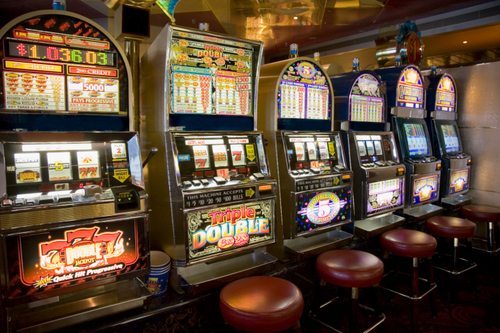It seems like it was just yesterday when we first heard about crypto and Bitcoin. Now a few years into the crypto boom, concepts such as the metaverse, NFTs (or non-fungible tokens), and the blockchain have penetrated many aspects and industries in our daily lives.
One big industry that has benefited from the innovations of the blockchain is gaming. Blockchain games, metaverse games, NFT games, and play-to-earn games have all cropped up as blockchain technology has taken over the mainstream in the past few years.
But how exactly are games built on the blockchain?
Before we talk about the ins and outs of blockchain games, we highly suggest you go and check out joystickgames.com. There you’ll find similar articles like this, about topics ranging from crypto games, virtual reality gaming, and many more! A definite must if you love gaming!
Going back, let’s try and answer the question at hand and see how these games are thriving on the blockchain!
What is the blockchain exactly?
Serving as one of the pillars of cryptocurrency, a blockchain is basically a distributed ledger system that stores a list of transaction records. These records are called blocks and are then chained together, with each block containing a hash of the current block (serving as a unique identifier), a timestamp, and a data hash of a previous transaction (or block).
This system allows for the exchange of assets that is easily verifiable and less prone to tampering, compared to traditional ways of transacting assets (like ordinary bank notes).
How do games use blockchain technology?
Now, there isn’t a one-size-fits-all way that games utilize blockchain technology. It largely depends on how a particular game integrates the blockchain, i.e. NFTs, monetary rewards, and crypto, into their game’s mechanic or structure.
There are simply a myriad of ways that games can and have used blockchain technology. As mentioned earlier, the use of NFTs in-game is one of the most commonly used methods of integrating innovative technology.
What are NFTs, anyway?
NFTs or Non-fungible tokens are unique digital assets that ties ownership to different items. This can be a digital image, a particular song, a collectible, and the like. The item could be either physical or virtual in nature.
What makes them non-fungible is the fact that they cannot be replicated and have a distinct identification number/code assigned to them, making them unique compared to other items.
The main thing here is that NFTs grant you digital ownership of the thing, which you and you alone can have.
How do games use NFTs?
As NFTs and blockchain technology have grown in popularity, the different ways games have utilized the two have also increased. Of course, the more interesting the way game developers integrate these technologies into their games, the better! But, there are a few standard ways that game devs usually gravitate to.
To give you a better understanding of how NFTs have been used in games, we’ve put together a shortlist. Check them out:
- In-game collectibles as NFTs
- Costumes, clothing, and other cosmetic items as NFTs
- Characters, heroes, champions special monsters, or pets as unlockable NFTs which are unique to you (as the owner)
- Mystery boxes and loot
- Hidden areas, maps, and levels that are unlocked or purchased as NFTs
- Character abilities or special powers as NFTs (which could be upgraded down the line)
- Special weapons and items as NFTs
The play-to-earn gaming genre
Another important aspect of games built on the blockchain is the fact that most of them are what is called “play-to-earn” games. Play to earn games, as the name suggests, just means that players are able to win real-world money by playing the game.
Blockchain technology enables this in gaming because of the ability of players to exchange digital items for real-world value (like some of the examples shown above) or be awarded crypto coins for winning a particular game.
Some examples of how gamers can earn money through these games are poker or gambling games that reward a player for winning a tournament. Another example is if a game rewards a player a unique NFT for finishing a particular level, and that NFT is worth a particular value which the player could sell down the line if he wanted to.
And that sort of sums up the appeal of games built on the blockchain. The possibilities are simply endless! So what are you waiting for? Go ahead and hop on a blockchain game to let yourself experience this new and budding genre in gaming!




